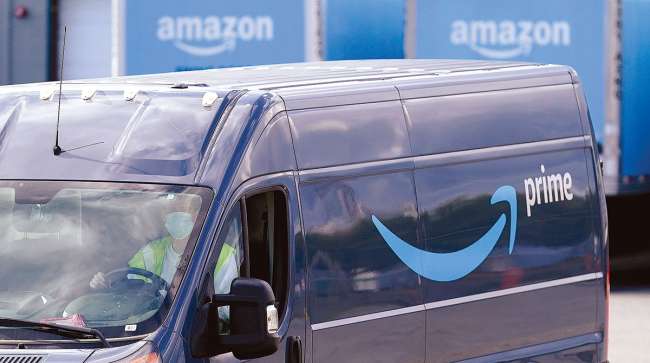Amazon Service Lets Merchants Deliver to Physical Stores

[Stay on top of transportation news: Get TTNews in your inbox.]
Amazon.com Inc. is offering a new service that will let its 2 million merchant partners deliver inventory directly to physical retail stores and warehouses, the latest push by the e-commerce giant to expand its logistics network beyond serving online shoppers.
Amazon on Sept. 12 announced that the service, which is currently in a pilot test, will be more broadly available later this year. The offering was unveiled this week at Amazon Accelerate, a conference that drew about 2,000 online merchants to Seattle.
The latest capability for merchants shows that the e-commerce giant is trying to control more inventory deeper in the supply chain before it’s sold. Merchants can use the service, called Multi-Channel Distribution, to send inventory to warehouses run by other logistics providers, other online marketplaces and even to physical stores to be put on shelves.
The service will augment the company’s other programs like Buy with Prime, which lets merchants pay Amazon to deliver products to customers who make purchases on non-Amazon websites. Buy with Prime was an expansion of Fulfillment by Amazon, which provides warehousing storage, packing and delivery of merchants’ products sold on Amazon’s website.
Big news coming out of #AmazonAccelerate this week: Supply Chain by Amazon, an end-to-end, automated set of supply chain services that provide sellers with a complete solution to move products from their manufacturers to customers around the world.https://t.co/xdFbFaTBFJ — Dharmesh Mehta (@dharmeshmehta) September 12, 2023
Amazon ranks No. 9 on the Transport Topics Top 100 list of the largest private companies in North America.
Amazon for years has been adding services in an effort to become a leading logistics company that oversees the flow of products from factories in China to customers’ doorsteps around the world. It is trying to replace a variety of businesses handling tasks like ocean freight, customs, ground transport and inventory storage, with one seamless service. Other companies interested in the space include logistics startup Flexport Inc., which announced similar services Sept. 12.
Today, we're launching a supply chain revolution for entrepreneurs with the first truly all-in-one, end-to-end global trade solution powering instant access to financing, freight, fulfillment & replenishment to all major marketplaces & retail stores: https://t.co/9J25IbgeOp (1/3) pic.twitter.com/dgRrBweHJf — Flexport (@flexport) September 12, 2023
About 60% of all products sold on Amazon come from independent merchants. They pay the company commissions on each sale, plus additional fees for logistics and advertising. These merchants have been an increasing focus for the company. With online sales growth slowing, Amazon has been ratcheting up fees it charges merchants and looking beyond its web store for additional sources of revenue.
Want more news? Listen to today's daily briefing above or go here for more info
Amazon’s seller services generated $32.3 billion in the second quarter, up 18% from the same period a year earlier and more than the profitable cloud services business. Last year, for the first time, the company’s charges and fees for sellers began gobbling up about half the cost of each sale, making it harder for merchants to make a profit. In the U.S., Amazon’s biggest market, the company captures about 37.6% of all online spending, according to Insider Intelligence.
“Sellers will be able to offload even more of the complexity of their supply chain logistics to Amazon, both for the products they sell in Amazon’s store and through other sales channels including online and physical store locations,” said Dharmesh Mehta, Amazon’s vice president in charge of worldwide seller services. “We are excited to help sellers, both on and off Amazon, save more money, drive more business growth, and have more time to continue inventing amazing products for customers.”




